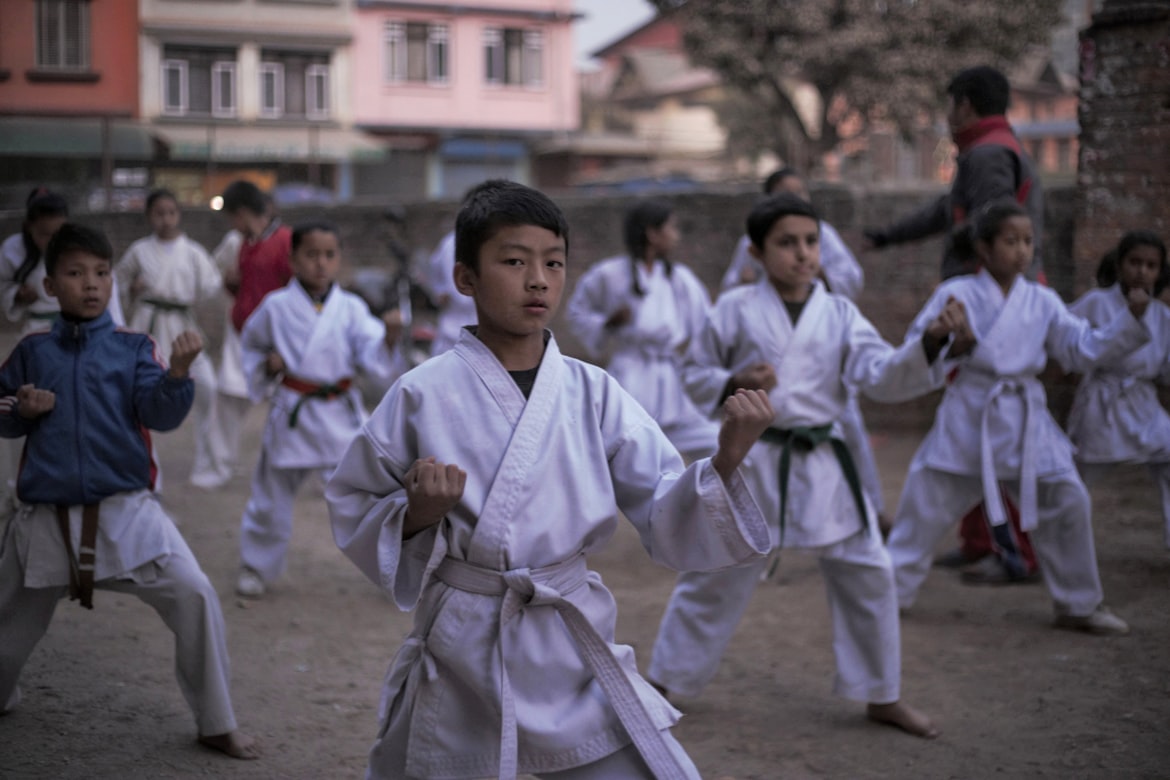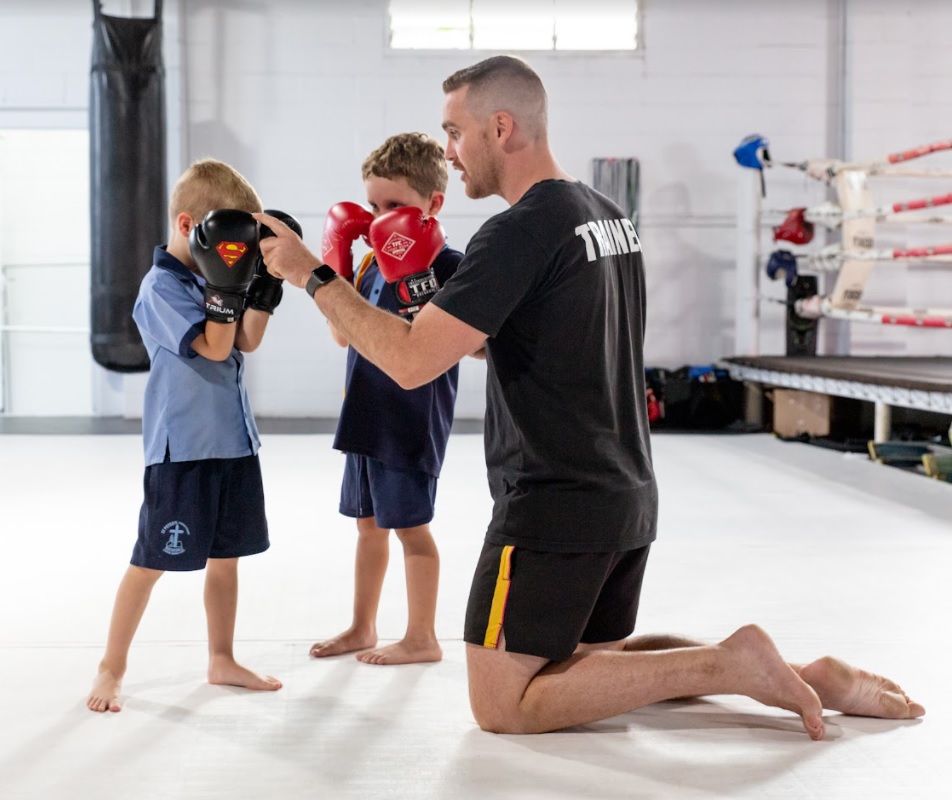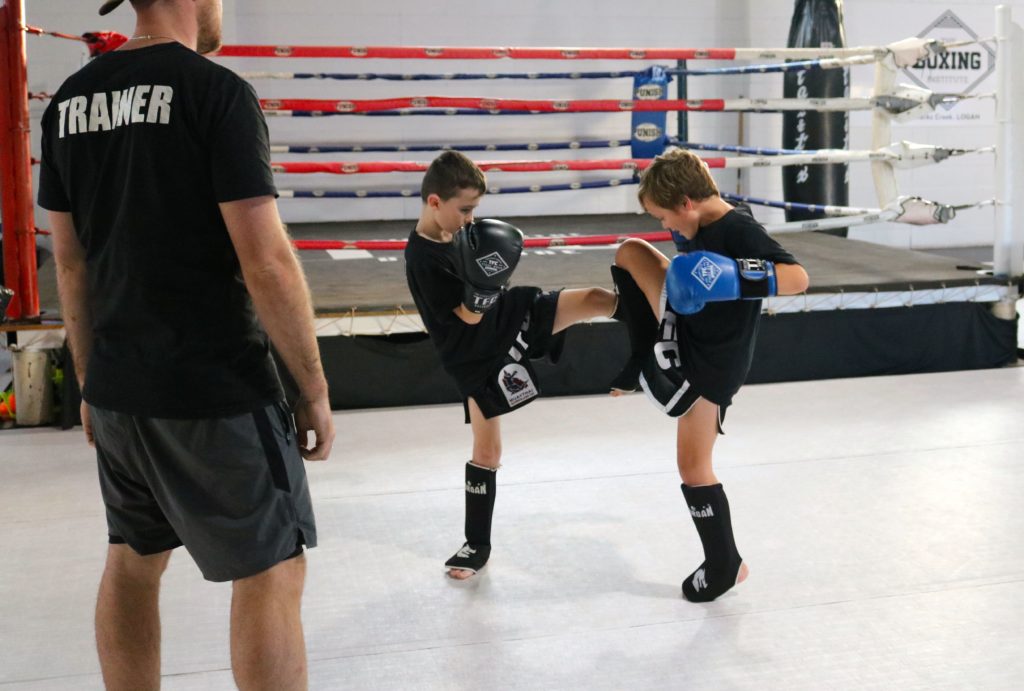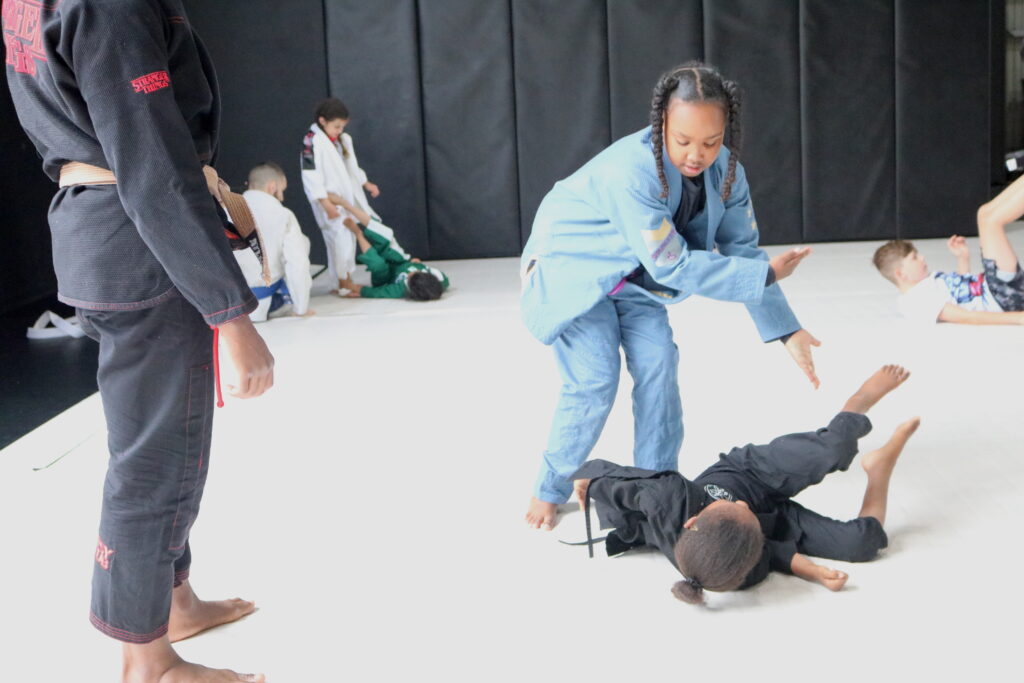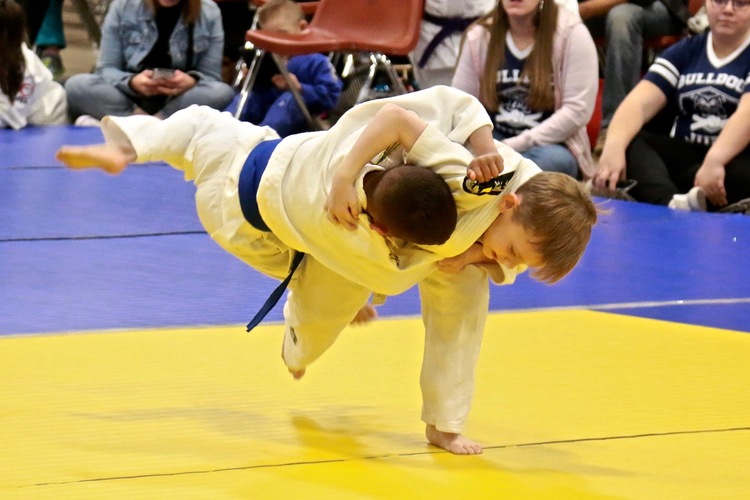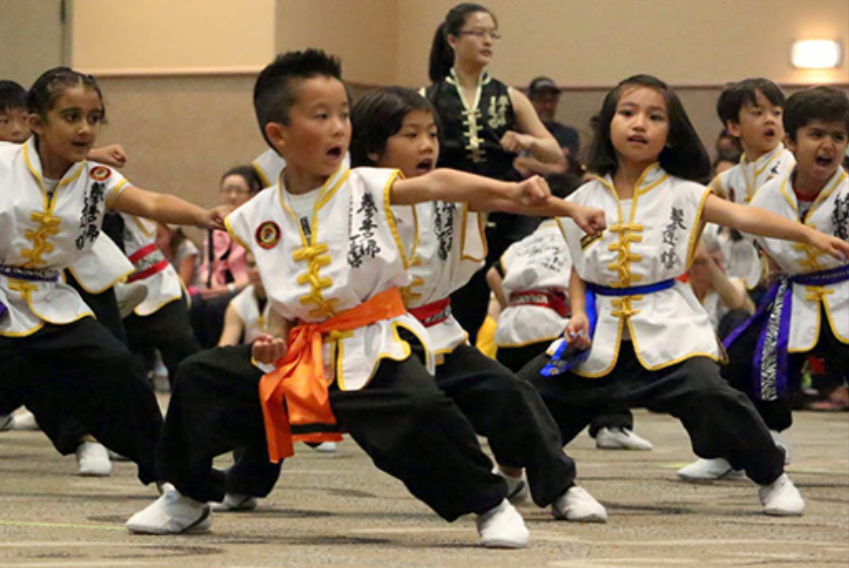The benefits that physical activity offers are more than just in physical health. There are also benefits in mental health, social networks and creating good habits. However, kids’ martial arts benefits include more than those. They also build values and teach young people to become respectable members of society.
It’s not surprising that more parents are looking into martial arts classes for kids. The challenge comes in picking the best system to enrol them in. You’ve got to consider all kinds of things and ask yourself a lot of questions, including:
- What are the best martial arts against bullies?
- What’s the best martial arts for kids’ self defense in general?
- What is the best martial art for my child?
- Should I enrol my child in online martial arts classes?
- How do online martial arts for kids even work?
We understand your confusion, and we see where you’re coming from. There are so many schools offering different kids’ martial arts classes out there. Your kids will be spending a lot of their free time practising and making friends in class, so it only makes sense for you to look for the best martial arts for kids to choose from.
There are a variety of options available when it comes to martial arts for kids. Each of them have distinct pros and cons. Different systems may emphasize varying aspects. Some examples are self-defence, building confidence, and developing physical abilities.
Like its adult counterpart, martial arts for kids can be rooted in two things. They may teach a more traditional style or lean more towards the combat sports aspect. Here in Australia, we’re lucky to have a great mix of both. The Australian martial arts population is still growing, and yet it has produced champions in all different styles.
Australia has produced many champions in combat sports such as Boxing, Muay Thai, BJJ, Judo, and MMA. Comparatively, we are still a young country. But we have earned the respect of more established countries.
Developing the breadth and depth of talent in these sports is no small feat. Years of hard work, sacrifice, study, and progress made by many martial artists have gone into it over several generations. Their efforts have put Australia on the map as a well-respected authority in martial arts.
Knowing that there are several options available, what is the best type of martial arts for kids? This article breaks down the finer details of each type to help you pick the best program for your kid.
-
Boxing
Without a doubt, boxing is the most recognizable combat sport on the planet. It boasts an impressive participation rate among adults and children alike. The systems and programs developed around it are thorough and tested in competition. As a result, it provides a proven pathway of progression from newcomer to champion.
Several factors will determine whether or not they’ll enjoy it. One of the best perks of boxing for kids is the fun that they can have with it. If the activity is fun, it will be more likely to engage your kid.
Kids should have a blast while learning the fundamental movements of boxing. Find gyms that offer martial arts for kids, and observe how well the boxing coaches teach kids. A good coach should be able to make training fun in an age-appropriate manner.
At what age should you start boxing? For adults and children alike, the earlier, the better. Gyms that offer boxing for kids generally accept ages as young as six years old. However, it still depends on the child’s interest and capacity to follow instructions.
You’ll have to buy boxing gloves for your child once they’ve joined the program. Boxing for kids tends to have shorter sessions than adult classes. This is because they have shorter attention spans. For kids ages 6-12 years old, boxing classes can last around 30 minutes. This duration applies given that they’re in and out of the gym with no time wasted.
-
Kickboxing and Muay Thai
Another martial arts class that kids usually enjoy is Kickboxing or more specifically Muay Thai. If you’re looking for a martial art rooted in a more traditional style, then these two are good options for your kid. Kickboxing utilises the whole body, incorporating punches and kicks. Muay Thai does the same, with the addition of clinching, kneeing, elbows and other traditional ceremonial aspects.
Kids learn best when they’re having fun. It would be a big plus if you could find a coach that teaches Kickboxing for kids and knows how to make it fun.
Most trainers in Kickboxing and Muay Thai adopt a more traditional style of teaching. It’s up to you to find one that isn’t too rigid on children. Some traditional practices include using a Muay Thai grading system to help track progress.
Kickboxing and Muay Thai emphasise balance, especially when learning to kick. Training a child at a young age is beneficial since their centre of balance is low to the ground. Compared to adults, they can kick, spin, and fall with no problem. They can fall many times over with minimal physical consequence. As a result, they can practise over and over and over until they can execute techniques with finesse.
Gyms can offer Kickboxing and Muay Thai for kids as young as six years old. Each class lasts around 30 minutes, and there are a few more purchases needed compared to boxing. Since these systems use both punches and kicks, you’ll have to get shin guards in addition to boxing gloves.
-
Brazilian Jiu Jitsu
Brazilian Jiu Jitsu is a gentle art that happens on the ground. It aims to neutralize rather than strike down the opponent. BJJ adopted and expanded the Newaza or ground technique from the Judo system. As the least violent form of self-defence, it is a popular choice for adults and kids alike. Today, most BJJ gyms also offer Brazilian Jiu Jitsu for kids.
There are a wide array of benefits BJJ can help contribute to child development. Body awareness and coordination are some examples. In addition, since it is a traditional practice, it also teaches values such as discipline and respect.
To start your kids off on their journey, you’ll have to buy the kid’s BJJ gi and a white belt. The uniform makes it look like the typical martial art. Tied around the gi are coloured ranking belts, with white as the lowest rank. As in traditional martial arts, kids’ BJJ belts indicate a child’s progression. Grading ceremonies take place several times throughout the year.
The playful nature of BJJ makes it accessible for kids. Classes are enjoyable, even when they take longer because of the demonstrations. They can last between 40-45 minutes, which is longer than Boxing and Kickboxing.
Despite taking longer, students remain engaged in kids’ BJJ classes until it ends. This is because coaches that teach BJJ for kids use a lot of BJJ-specific games to make lessons extra fun. You can expect your child to have a lot of contact with other students throughout the class.
-
Judo
Judo is one of the most popular martial arts for kids, practised by kids around the world. It is an Olympic sport that originates in Japanese traditional martial arts.
Also practised in the gi, Judo is the martial art that precedes Brazilian Jiu Jitsu. It is a grappling-based martial art, so your kid will be making a lot of contact with other students.
Judo teaches to sweep, trip, throw, and safely break fall. There is a lot of action happening in a Judo class. Make sure to find a safe environment with high-quality trainers teaching Judo for kids.
As a traditional martial art, Judo follows a coloured belting system. Each belt colour indicates a rank and serves as a point of assessment for the trainers. Trainers make sure that your kid can stand on equal footing with other students of the same grade.
Starting Judo at a young age will benefit your child’s physical development. With lots of contact during class, your child will grow and adapt to the demand of moving another kid’s weight. This makes Judo an effective strength-building martial art.
Judo requires a gi, so you’ll have to buy one and a white belt before starting classes. Judo for kids emphasizes safety during practice, and classes can take 30 to 45 minutes. Expect your child to be in close contact with other kids as they engage in a physical and mental workout on the mats.
Not only will Judo develop your child’s physical abilities, but it will also teach them to defend themselves without striking.
-
Kung Fu
Kung Fu is an umbrella term encompassing all Chinese martial arts. It is also a phrase meaning human achievement or a skill learned through hard work over time. (Which is both very beautiful and so poetic, we love it.)
Unlike other martial arts, Kung Fu doesn’t require a specific type of training grounds. In fact, people typically practise it both indoors and outdoors, provided there is enough room to maneuver. When you enroll your kids in a Kung Fu school, we suppose it is only wise to find one with padded floors for safety.
Kung Fu emphasizes humility in addition to respect. Kids learn not to boast or show off their skills, and they may not even be allowed to teach fellow students unless instructed. They are taught not use their physical skills unless absolutely necessary, and are encouraged to peacefully resolve conflicts instead.
-
Karate
Karate is another popular martial art option for kids. So popular, in fact, that it has been so severely commercialized in many countries. It may be a more offensive sport, but it doesn’t teach kids to be violent. In fact, since it’s a traditional Japanese martial art, it emphasizes many of the admirable Japanese values such as respect, focus, and discipline.
From bowing to standing still and waiting for the next command, a Karate dojo is a place of respect. There’s no fooling around once you’re on the mats, and students are expected to pay attention to the instructor. Instructors quickly correct misbehaviour, and over time, the discipline kids learn in the dojo spills over to the home and the classroom.
Classes typically last 45 minutes to an hour, starting and ending with a bow to the teacher. As a traditional martial art, Karate also uses the gi as its uniform, with coloured belts denoting rank and mastery. Higher-level kids may be tasked to assist lower-level ones when learning new skills. This also gives them opportunities to learn a good amount of coaching and leadership skills.
-
Mixed Martial Arts
MMA or Mixed Martial Arts is becoming the art of choice for martial arts enthusiasts. It is an amalgamation of techniques from striking, wrestling, and ground fighting. Today, it has built a reputation as the most well-rounded and adaptable style of martial arts.
Given its strong competition lineage, MMA incorporates only the most effective techniques. Particularly those that have proved their use inside the cage or the ring. The popularity of MMA in Australia is evident. Some Australian champions at the highest level of competition are UFC’s Alexander Volkanovski and Robert Whittaker and ONE Championship’s Martin Nguyen.
The growth of MMA as a sport is thanks to coaches and fighters constantly on the quest for growth. They keep on the lookout for the upcoming most effective technique to use in competition. As a mish-mash of various fighting styles across the globe, MMA is ever-evolving.
Even MMA for kids is versatile. Mixed martial arts classes will let your child sample techniques for various fighting systems. Learning different techniques and strategies will help them develop their mental focus.
A typical class on mixed martial arts for kids usually lasts for about 45 minutes but can go longer. Children’s mixed martial arts also include punching, kicking, wrestling, and rolling. Expect for them to work out their physical and mental abilities through drills and games.
You’ll have to get your kids some rash guards and MMA shorts to use in class. They will also need boxing gloves and shin guards for some drills.
-
Final Thoughts
Whether you’re enrolling your child into martial arts for fun, fitness or learning self defense, Australia offers many options that are suitable for every kind of child. They’ll also be connecting with kids from many different walks of life where they’ll make lifelong friends and be part of an amazing community!

